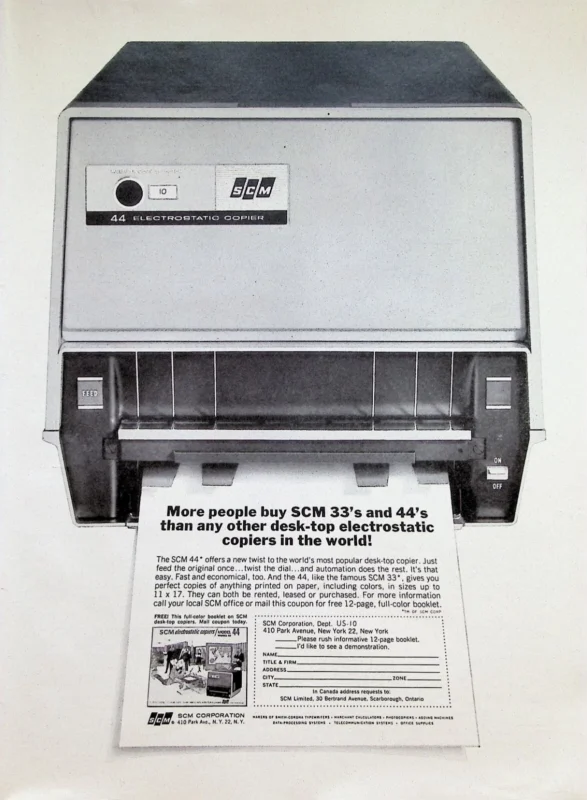Navigating through all the speculation and uncertainty around the year’s top story.
Hands down the biggest story of 2019 are Xerox and HP. As of today, it’s still a developing story and far from over.
In case you have been stuck in a cave somewhere, the story broke on Nov. 6 a day after Xerox Holdings Corp. announced that it had reached an agreement with FUJIFILM Holdings Corp. after a long contentious battle. That was the day The Wall Street Journal reported the Xerox board of directors had discussed making a $22-a-share cash-and-stock offer.
All seems to be quiet on the Eastern and Western fronts about the potential deal. Other then comments from Xerox and HP spokespersons in press releases, no one from Xerox or HP has responded to requests for comments from the business press. The latest development, attributed to an unnamed source, is that Xerox Holdings Corp. has offered HP Inc. a month to examine each other’s financials to encourage HP to agree to the offer.
As surprising as this news was, The Cannata Report like many industry observers had been speculating that it was more likely that HP Inc. would have been the one to buy Xerox. However, further consolidation in the imaging industry should not be an unexpected event. In an interview with new Marco President Doug Albregts in the November issue of The Cannata Report, he told us, “No matter what anybody says, there’s just not enough room for the number of OEMs that we have. At some point, you’re going to see consolidation.”
Those words were echoed in a statement by Xerox spokesperson Caroline Gransee-Linsey, “Our industry is long overdue for consolidation, and those who move first will have a distinct advantage. We look forward to expeditiously moving this process forward and creating additional value for shareholders.”
HP’s statement on any deal leaves the door to a potential deal wide open. “We have a record of taking action if there is a better path forward and will continue to act with deliberation, discipline and an eye towards what is in the best interest of all our shareholders.”
Can a company that is valued at $8.62 billion successfully acquire a company valued at $28.93 billion as of Friday, Nov. 8? If the deal goes through, the benefits to both companies are cost savings resulting from the consolidation of the two companies according to individuals involved in the discussions.
There is a lot of discussion around the consolidation of two struggling businesses, especially two print-centric businesses. According to an article in the New York Times, analysts estimate that the savings from a merger could be $1.5 billion a year or more. Those savings would be in addition to other cost-cutting measures the two companies have announced of late. In February 2019, Xerox announced at its Investors Day that it planned to cut costs by more than $640 million while in October HP announced plans to cut 16% of its workforce as part of a restructuring plan.
Bloomberg Intelligence analyst Robert Schiffman noted that a merger with HP would create “a behemoth printing and PC maker with nearly $70 billion in revenue.”
Even though there is no indication that HP has rejected the offer, not everybody seems to be excited about the potential deal. HP’s partners, for example, are questioning the rationale behind any merger between the two companies. The primary concerns, warranted or not, is Xerox’s history as a direct-sales organization with little understanding of how the IT channel model works while HP is a mature channel-focused business. Another concern centers around Xerox taking over HP’s PC business.
There continues to be speculation about what the two companies would look like if they were to merge. There is still the possibility, albeit a remote one, that the roles could be reversed, and HP becomes the acquirer. Another issue that could impact the deal is who will lead the combined company. Both HP and Xerox have relatively new leadership. HP President & CEO Enrique Lores has only been in that position for a few months while Xerox Vice Chairman & CEO John Visentin has been in that role for about a year and a half.
The business press has been particularly harsh when describing the two companies, honing in on the declining legacy print business.
An article in Fortune noted, “The massive deal would combine two venerable but troubled names in tech, in the hopes that they would be stronger together. The takeover bid highlights the difficult position HP Inc. is in. If it rebuffs the deal or any rival offer, it risks continued decline, while combining with another troubled company is also dangerous.”
What’s next?
This remains a developing story filled with uncertainty and doubt. We believe Xerox or HP will eventually be acquired whether it is by one or the other or some other entity. Whatever happens between those two companies, rest assured, the consolidation beat will go on. We agree with Marco’s Albregts that consolidation in the printing industry is inevitable. Think about the acquisitions in this industry during the past 30+ years. Remember Konica and Minolta; Kyocera and Mita; Ricoh and Savin, Lanier, and Gestetner; Canon and Océ; and HP and Samsung?
Another consideration that we can speculate more on at some later date is should the Xerox and HP deal go through, how will that impact the smaller players in the A4 and printer space? Think Brother, Epson, and Lexmark, for example.
But first, let’s see how the Xerox and HP story plays out.
Access Related Content
Visit the www.thecannatareport.com. To become a subscriber, visit www.thecannatareport.com/register or contact cjcannata@cannatareport.com directly. Bulk subscription rates are also available.




